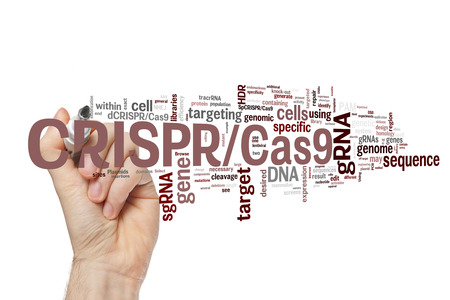The CRISPR-Cas9 gene editing tool is showing great promise for correcting genetic defects, but one problem with this treatment is the speed at which the edits are made, which typically takes several hours. At such slow speeds, it is difficult to study the cellular response to DNA damage. Now a team of researchers at Johns Hopkins University have slashed the time to just a few seconds.
CRISPR-Cas9 is used to make a cut to the DNA to remove sections of DNA or perform edits. The system uses a guideRNA (gRNA) to direct the Cas9 enzyme to the correct place to make the cut. The Johns Hopkins researchers improved the temporal resolution of CRISPR-Cas9–mediated DNA cleavage using light-sensitive nucleotides that were incorporated into the gRNA.
Using this approach, the gRNA binds to the correct place, but will not direct the Cas9 enzyme to make the cut until light is applied. When light is introduced, the cuts occurred rapidly – in just a few seconds. The researchers call this a caged gRNA approach, as the gRNA will not direct the Cas9 enzyme to make the edit until it is uncaged by light. This approach has been named very fast CRISPR – vfCRISPR.
This approach allows the researchers to activate the editing on demand and achieve synchronized cleavage of DNA, which has let them study of early molecular events of DNA repair processes, such as the study of how specialized cell proteins repair the DNA where the cut is made. Previously efforts to study the repair process have been hampered by the slow speed at which CRISPR-Cas9 works. Previously, it has not been possible to damage the DNA in a fast, precise, and on-demand way. Ionizing radiation has been used to cause DNA damage quickly, but this approach causes widespread DNA damage rather than damage at a specific point.
The researchers introduced CRISPR-Cas9 to cultures of human embryonic kidney cells and bone cancer cells and waited 12 hours to ensure that binding had occurred. They then activated the system by shining a specific wavelength of light on the cells. Within within 30 seconds of shining light on cells, CRISPR had made cuts to more than 50% of its targets. The researchers then studied the proteins involved in DNA repair. Those proteins started the repair process within 2 minutes of light activation and that process was completed within 15 minutes.
This approach also allows for more precise editing, as the researchers were able to perform a edit one allele while leaving the other unperturbed. This approach could also be used in a treatment for diseases such as Huntingdon’s, which involve only one abnormal copy of a gene.
Researchers Darpan Medhi and Maria Jasin at the Memorial Sloan Kettering Cancer Center say their approach turns CRISPR-Cas9 from a blunt to a very precise tool.
You can read more about the study in the paper – Very fast CRISPR on demand – which was recently published in the journal Science. DOI: 10.1126/science.aay8204
